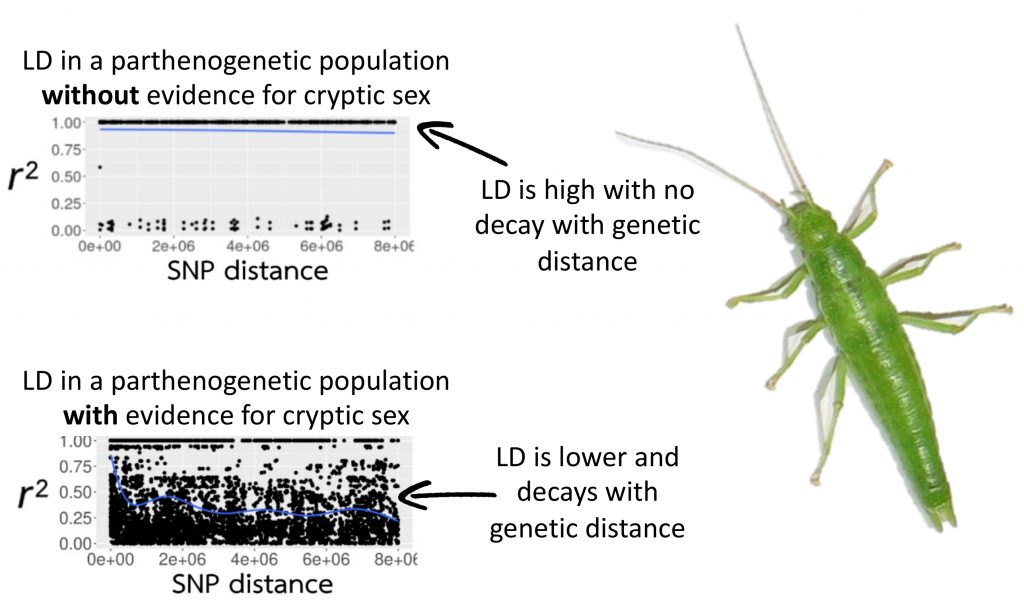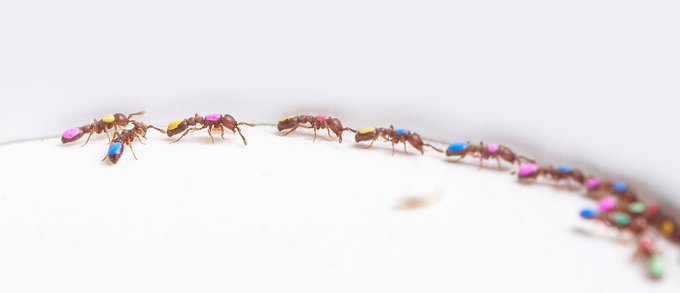
Last week we managed to get out two new preprints!
Firstly, are parthenogenetic species avoiding the costs of parthenogenesis by having cryptic sex?
In our new paper, we screen for genetic signatures of cryptic sex in eight populations of parthenogenetic Timema stick insects and found evidence for sex in two of them!
Cryptic sex is likely mediated by rare males and may help to explain the unusual success of parthenogenesis in Timema. This also raises the question of whether episodes of rare sex are in fact the simplest explanation for the persistence of many old parthenogens in nature.
This work was led by Susana Freitas with help from myself, Marjorie Labédan, Zoé Dumas, and Tanja Schwander.

In the second paper, we find not only that Diploscapter nematodes differentially infect foraging ants (Ooceraea biroi) but also that they change the behaviour of their hosts so they spend less time outside the nest. This has the effect of reducing the division of labour and increasing the spatial overlap between hosts, which is expected to facilitate parasite transmission.
This means that division of labour not only shapes infection risk and distribution but can also be modified by parasites.
This work was led by Zimai Li in Yuko Ulrich’s lab.